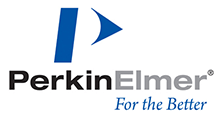Introduction
Foods, together with water, provide the major proportion of the total daily intake of trace elements by humans. Spices and vegetables are some of the most common foods in the human diet around the world. Besides polluted soil and water, foods can also be contaminated with trace metals by the introduction of mechanized farming, the increasing use of chemicals, food processing and packaging, etc. In order to minimize adverse impact, it is important to measure and continuously monitor the levels of trace elements in various kinds of food materials. Trace element food composition data are also important for both consumers and health professionals. In recent years, food labeling legislation has enforced this requirement. Trace element determination in complex matrices, such as food, often requires sample preparation prior to determination by instrumental techniques.1

Cobalt (Co), copper (Cu), manganese (Mn), nickel (Ni) and zinc (Zn) are all essential elements, not only for mammals, but also for plants. They play important roles in many biological processes including carbohydrate and lipid metabolism.2 For example, a daily copper intake of 1.5 - 2.0 mg is essential and copper at nearly 40 ng/mL is required for normal metabolism of many living organisms.3 However, copper at higher levels is toxic to the circulatory system and kidneys. The trace element content of food items for all the essential elements mentioned above must be controlled on a daily basis. There is an increasing need to monitor the essential element levels in food samples at ever decreasing concentrations. For this purpose, very sensitive, yet rapid and inexpensive methods are necessary. The quantification of trace metals in food samples has routinely been carried out by inductively coupled plasma optical emission spectroscopy (ICP-OES),4 inductively coupled plasma mass spectrometry (ICP-MS),5,6 graphite furnace atomic absorption spectrophotometry (GFAAS)7 and flame atomic absorption spectrophotometry (FAAS).8,9,10 Compared with other techniques, FAAS has the characteristics of good precision and simplicity with lower cost and minimum operator proficiency. The objective of this work is two-fold: (1) to accurately analyze, using FAAS, the levels of essential metals (in particular: cobalt, copper, manganese, nickel and zinc) that may be present in some major spice brands available on the market; (2) to crossreference the measured levels to the recommended maximum tolerable daily intake limits specified by the U.S. Department of Agriculture (USDA).






